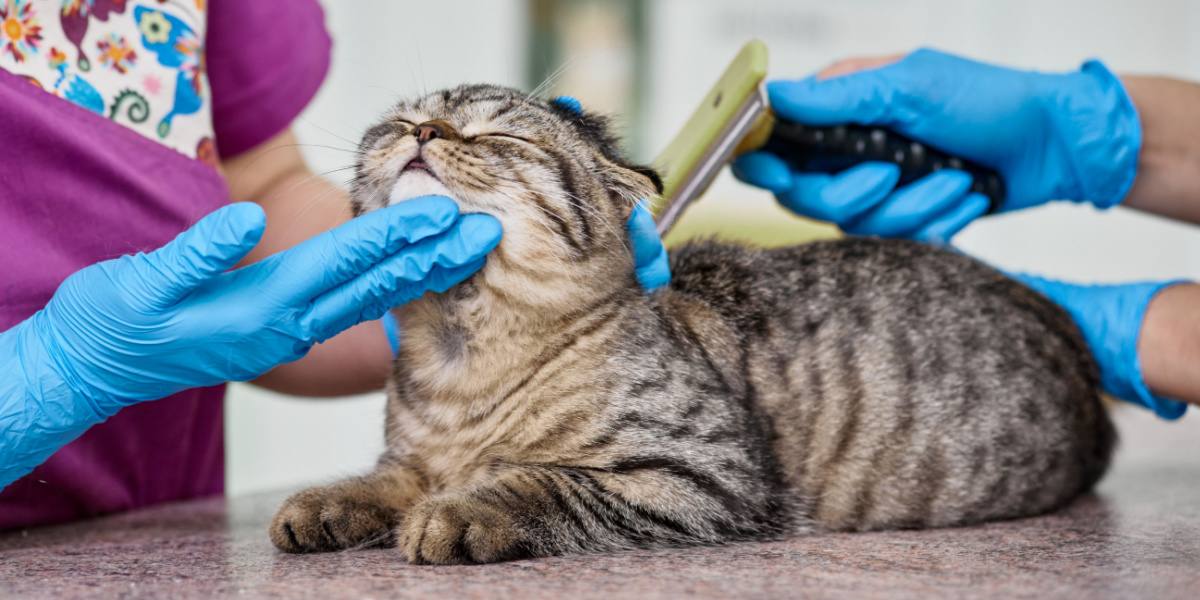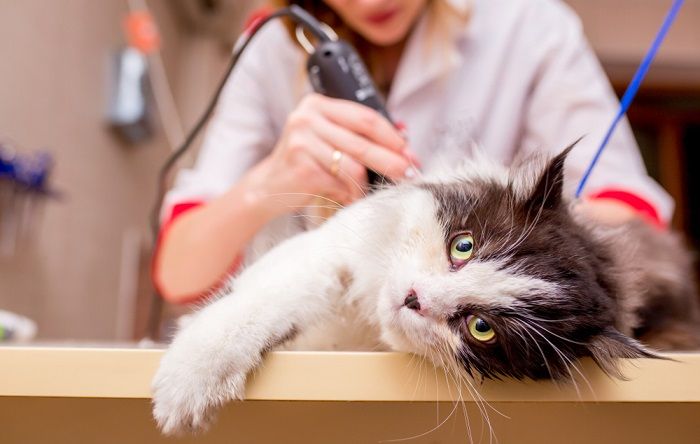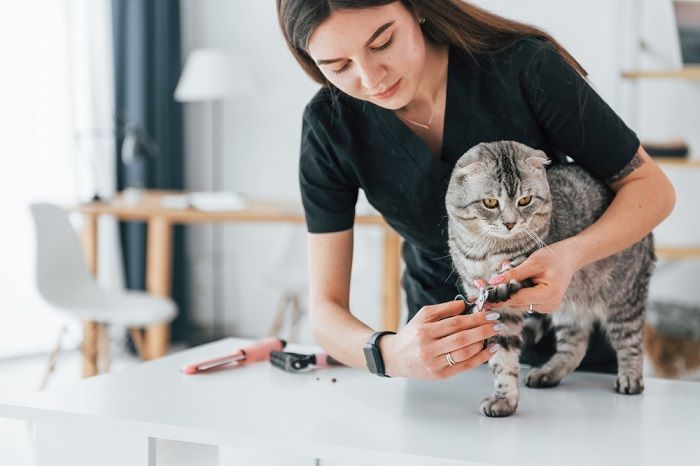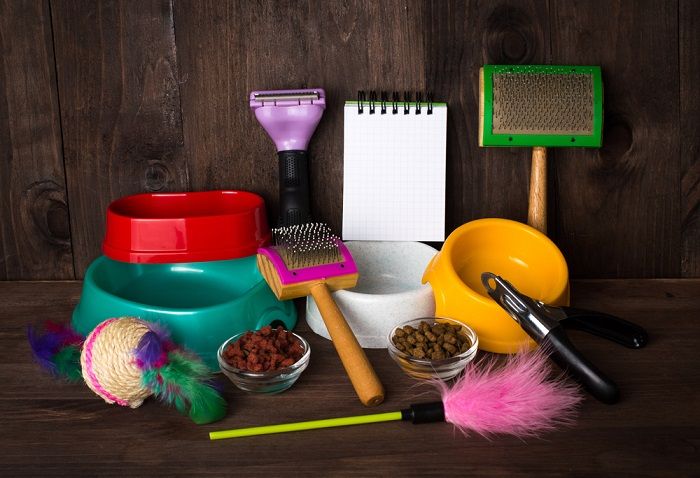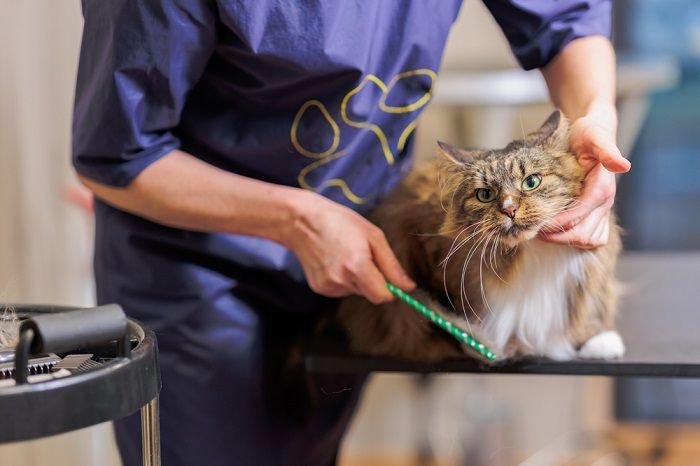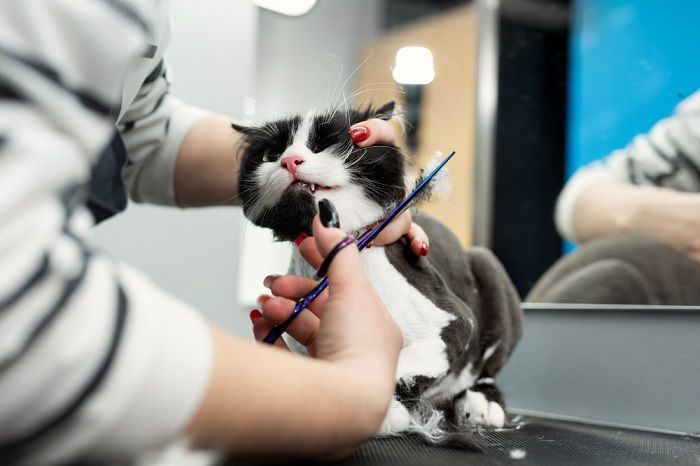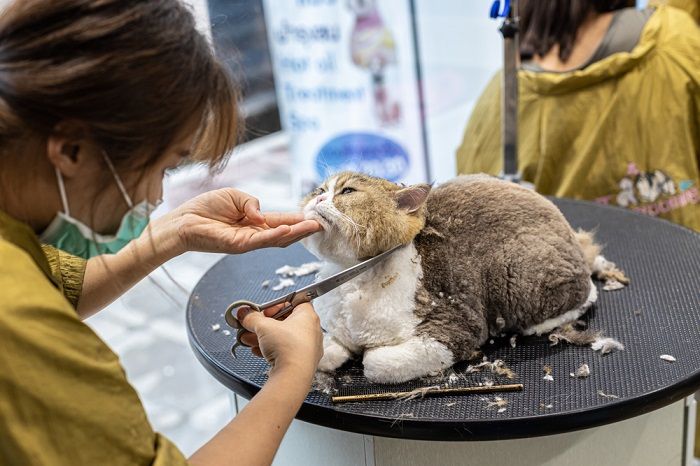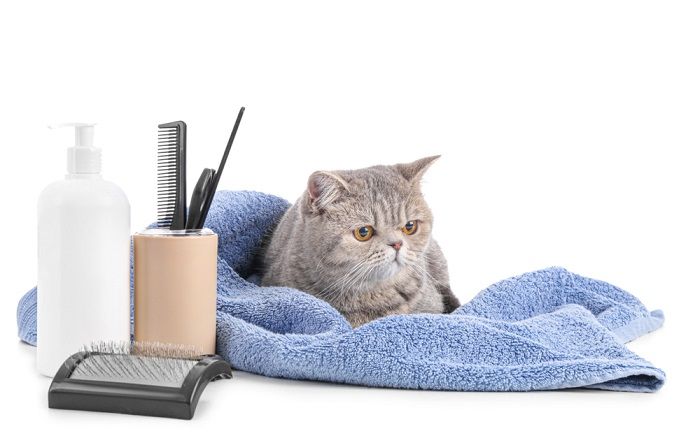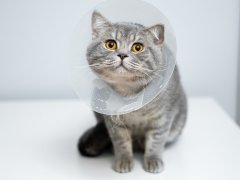Cats are meticulously clean creatures and spend significant amounts of their time grooming themselves. Generally speaking, cats do a pretty job of keeping themselves well-groomed with their highly specialized tongues that remove loose hair, dirt, and debris.
But sometimes they need a bit of extra help, especially medium and long-coated breeds. So how often should you groom your cat or take them to a professional groomer? Well, the answer very much depends on your individual cat—their coat type, breed, age, and physical ability to groom themselves.
Key Takeaways
Grooming removes loose fur, dirt, and debris, and prevents hairballs and long hair from matting.
Medium-haired cats and long-haired cats can benefit from a bath at the groomer up to four times a year.
Professional groomers or your veterinarian can help if your cat becomes very matted or if they won't tolerate brushing at home.
Here’s everything you need to know about cat grooming, from how often to groom your cat, what brushes you should use, and what to do if your cat doesn’t enjoy being groomed.
Why Should I Groom My Cat?
Some cats might need occasional trimming or dematting from a professional groomer.
There are lots of reasons to groom your cat regularly. It’s an essential part of maintaining your cat’s health and welfare needs, as well as being a special bonding time for you and your pet.
- Grooming removes loose and dead hair to prevent matting
- Brushing and bathing removes dust, dirt, debris, and unpleasant smells from your cat’s coat
- Regular grooming allows you to monitor your cat’s health, giving you the opportunity to assess their body condition/weight and spot skin problems, such as dryness or wounds
- Reduces the risk of hairballs
- Grooming strengthens your bond with your cat as it is quality time spent together
- It can be relaxing and even therapeutic for you and your cat
Brushing is an important and regular part of caring for your cat, but bathing shouldn’t feature too regularly. This is mostly because most cats just don’t really like it, but shampoo can also strip the skin of natural oils.
Some medium and longer-haired breeds do need a bath once in a while. Around four times a year (so once each season) is about right unless advised otherwise by your veterinarian. But for short and medium-haired cats, unless you have been advised by a vet, brushing is usually enough to help keep your cat’s coat in good condition.
Many grooming salons work with feline customers, and if you have been advised to bathe your cat, you might want to enlist the help of these skilled professionals. Pet groomers can also assist with dematting and coat trimming if your cat needs it.
Also Read: 12 Best Cat Brushes & Deshedding Tools
What About Claw Clipping?
Your veterinarian or professional groomer can trim your cat’s nails, or teach you how to do it at home.
Claw trimming is another part of grooming that depends on the individual cat. Most cats that go outdoors naturally wear down their claws by scratching surfaces such as trees, or simply just walking on rough surfaces such as concrete sidewalks. But indoor cats need the sharp ends of their claws trimmed once in a while—usually every 12 weeks, but more or less frequently in some cases.
Your veterinarian or a professional groomer can trim your cat’s nails for you. Unless you have been shown how to clip your cat’s claws, don’t attempt this yourself at home as there is a blood vessel in your cat’s nails called the quick, which can bleed if you cut the nail too short. If you’re keen to learn, you can buy some nail clippers and your vet can show you how to use them safely at home.
Also Read: How Often To Trim Cat Nails: A Vet Explains
How to Groom Your Cat
You’ll need different grooming tools depending on your cat’s coat type.
The first thing to do when you’re getting ready to groom your cat is to make sure you have the right equipment. Many products are designed to help make the grooming process easier for both you and your pet, but you’ll want to choose the right products for your cat’s coat type.
When it comes to brushes, there are a few to choose from, each with slightly different functions:
- Slicker brushes
- Soft bristle brushes
- Dematting combs/knives
- Rubber brushes
- FURminator
- Combs
- Grooming gloves and mits
When you approach your cat for grooming, you always start by letting them have a little sniff of the brush. Grooming is similar to human touch, so you need to be sure your cat is happy to be brushed before you start.
Cats like to be stroked around their head and face, so this is a good place to start. Always groom in the direction of their fur, and slowly move along to their shoulders and neck once they are happy.
The tummy is a sensitive area that most cats don’t like having touched, let alone groomed. You can always come back later and brush another part of your cat’s body if there’s a bit they don’t like. Short regular sessions are best, such as a little each day or a few grooming sessions a week.
Also Read: Best Cat Grooming And Deshedding Gloves
How To Deal with Matted Fur
It’s possible to gently comb out loose mats, but a groomer or your vet might have to shave out tight mats.
Long-haired cats and older cats that struggle to groom themselves are more likely to get tangles and knotted fur. It’s essential to groom these out and to prevent mats from forming with regular brushing to keep your cat comfortable. Cat’s skin can suffer under matted fur and can become dry or sore if left.
If your cat is comfortable being groomed, you can tease the mats out with your fingers, or use a de-matting comb or deshedding tool like a FURminator. Never tug on knots, and always work from root to tip. If the mats are too close to the skin or are severe, you can enlist the help of a groomer or the vet to clip the fur away as this will be more comfortable for your cat.
Also Read: How To Get Mats Out Of A Cat’s Fur
When Should I Use a Professional?
If persistent matting is a problem, a groomer can trim your cat’s hair shorter for easier maintenance.
Have your long-haired cat bathed professionally up to four times a year. Brushing is something you can do at home, but if you notice that your cat has severe matting that cannot be brushed, enlist the help of a professional cat groomer.
Grooming salons have lots of products to help de-mat fur, and can clip or trim out any clumps of matted fur while making sure it’s comfortable for your cat. A groomer or a vet can also trim your cat’s claws. In cases of severe matting or cats that are very aggressive when groomed, your vet might offer grooming under sedation to avoid your cat becoming distressed.
Also Read: Can You Shave A Cat?
What if My Cat Doesn’t Like Being Groomed?
Grooming should be an enjoyable, or at the very least, stress-free experience for you and your cat. If your cat doesn’t like being groomed, you’ll know about it quite quickly. If your pet shows any signs of stress or discomfort, stop the grooming session straight away.
- Tail swishing
- Trembling
- Ear twitching or flicking
- Skin twitching or rippling, especially on their back
- Turning their head toward the brush
- Growling or hissing
- Yowling
- Scratching
- Biting
If your cat resents being brushed and becomes stressed, leave them alone to relax—do not force them to be groomed. You want your cat to be happy and relaxed when they are groomed. Establishing a good grooming schedule when your cat is very young and using treats and rewards will also help get them used to it.
Also Read: How To Get A Cat’s Attention In 7 Simple Steps
Final Thoughts
Cats keep themselves extremely well-groomed and clean, but sometimes they do need a little extra help. Regular grooming sessions will keep your cat’s fur free of mats and loose fur as well as remove dirt and debris. Occasional professional grooming appointments are also helpful for long-haired cats and cats that have become matted.
Long-haired breeds require more grooming than short-coated cats, and daily brushing is recommended. Choose the right brushes for your pet’s coat type, and brush a little at a time often. You can enlist the help of a professional grooming service for severe matting or bathing, but cats should not be bathed too frequently as they don’t tolerate it very well.
Also Read: Why Do Cats Groom Each Other? Reasons Why Cats Socially Groom
Frequently Asked Questions
How often should cats go to a groomer?
Cats with medium and long coats only need to be professionally groomed up to four times a year, unless advised otherwise by a veterinarian.
Should cats go to groomers?
Cats should go to professional groomers to have a bath, to have their claws clipped, or if they have severe matting that cannot be brushed out
Do cats feel better after being groomed?
Cats like to feel clean, so they feel good when they’ve been groomed. They will also feel more comfortable when any mats have been removed.
